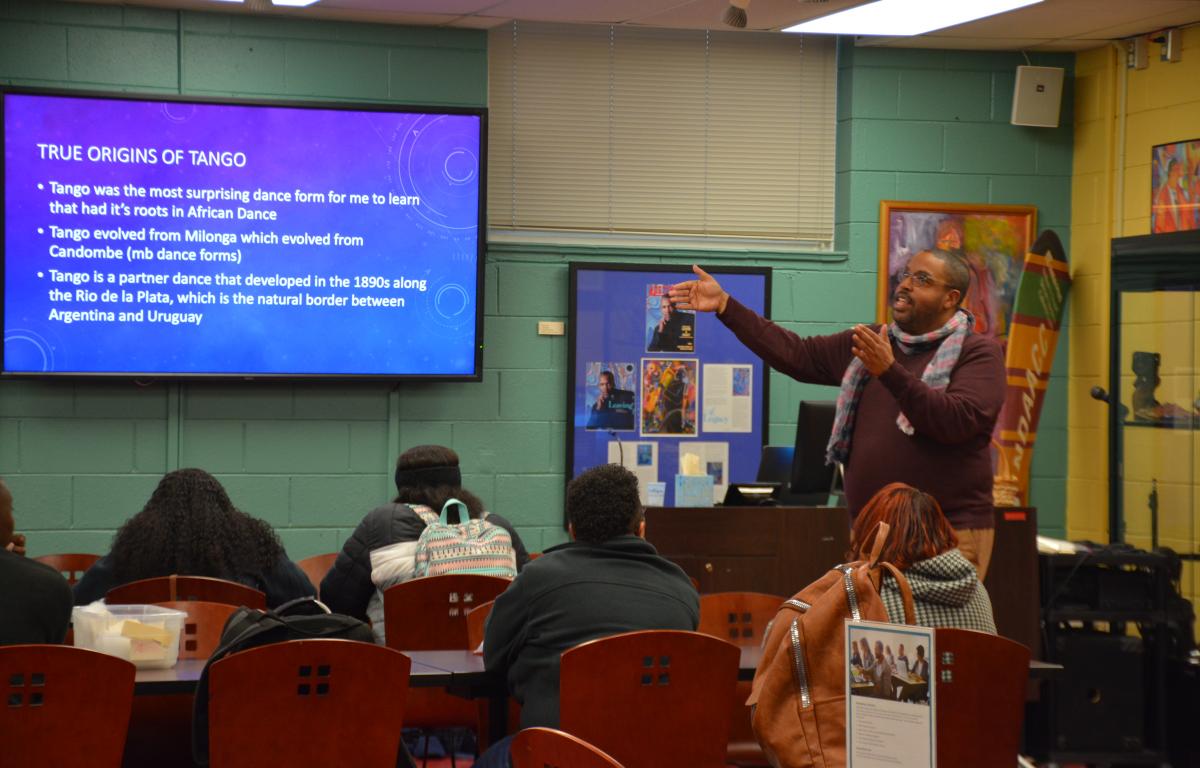CLARKSVILLE, Tenn. (CLARKSVILLENOW)- The evolution of dance especially, African Diasporic Dance traditions, is a passion for Marcus Hayes, Professor of Dance and African American Studies at Austin Peay State University.
Tuesday evening he took students on a journey proving the structured ballroom style of the sexy Tango dance has its roots in African dance.

When slaves were brought to South America, Central America, and the Caribbeans during the Trans-Atlantic Slave Trade many of the African dances evolved, through imitation from locals, Europeans and over time became what’s known as the “MB” dances: Mambo, Rumba, Bomba, Cumbia, Samba, Candombe, Lambada, Dembo, and Timba, Hayes said.
Tango became the more formalized dance style of what African-Argentine people were doing in dance halls and slums up until the 1930s. The dance then became known only by oral history and reemerged in the 1980s.

If traced back, Tango is closely related to the Argentine dance style called Milonga, which evolved from Candombe.
Candombe is an Uruguayan music and dance that comes from African slaves. It is considered an important aspect of the culture of Uruguay, Hayes said.

Students were amazed at the information since the imagery in the popularized Tango does not allude to the origins.


